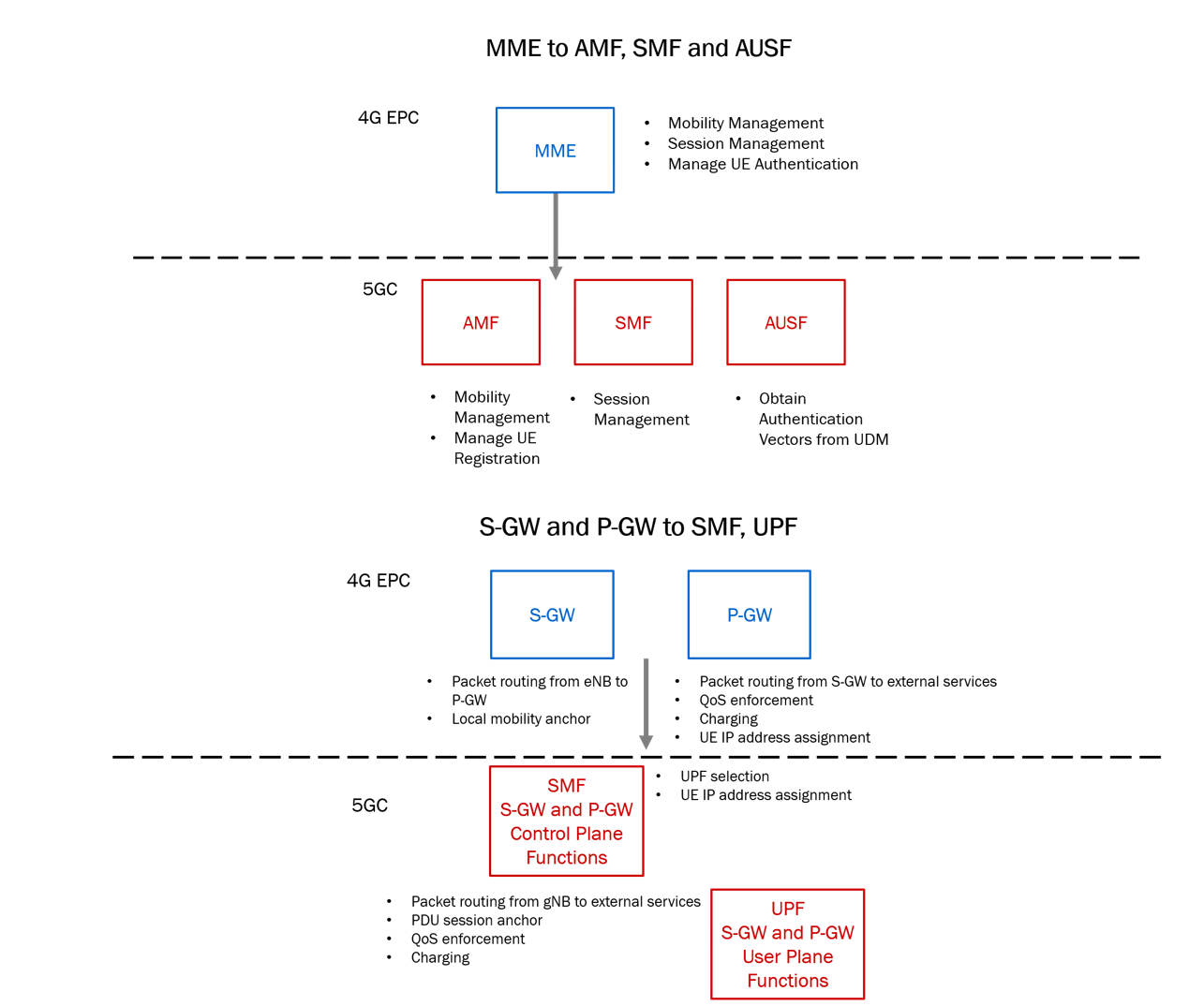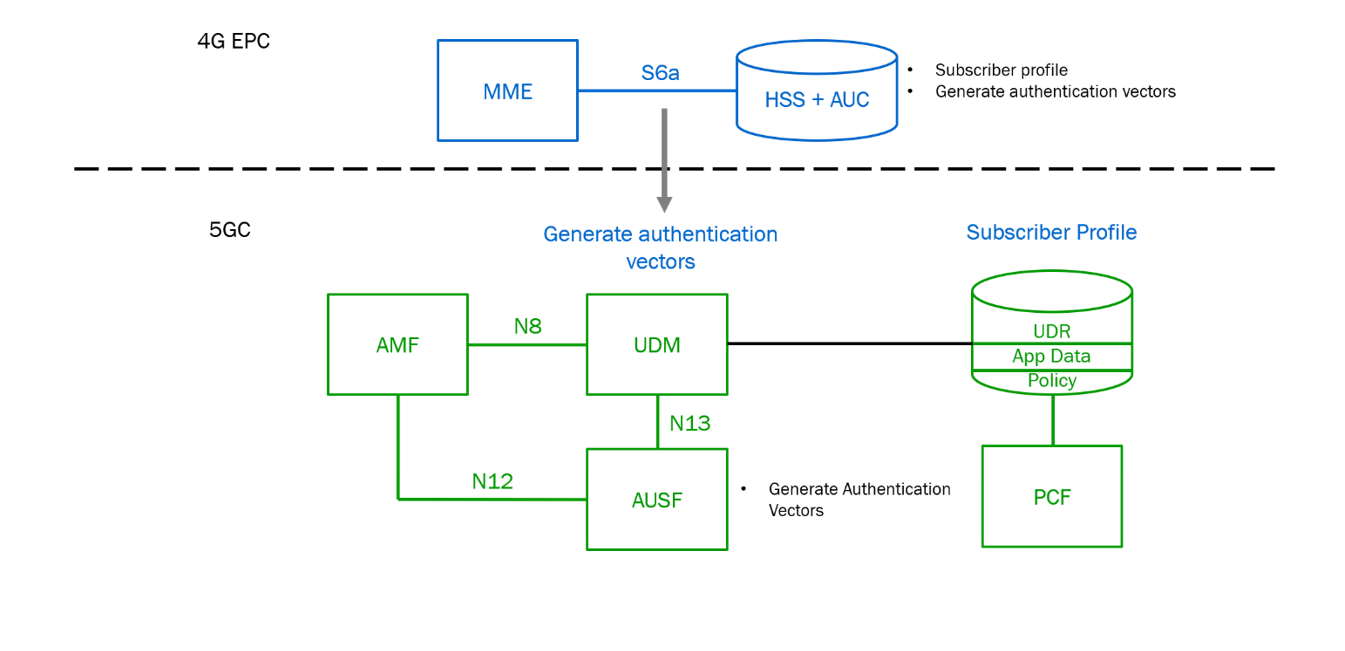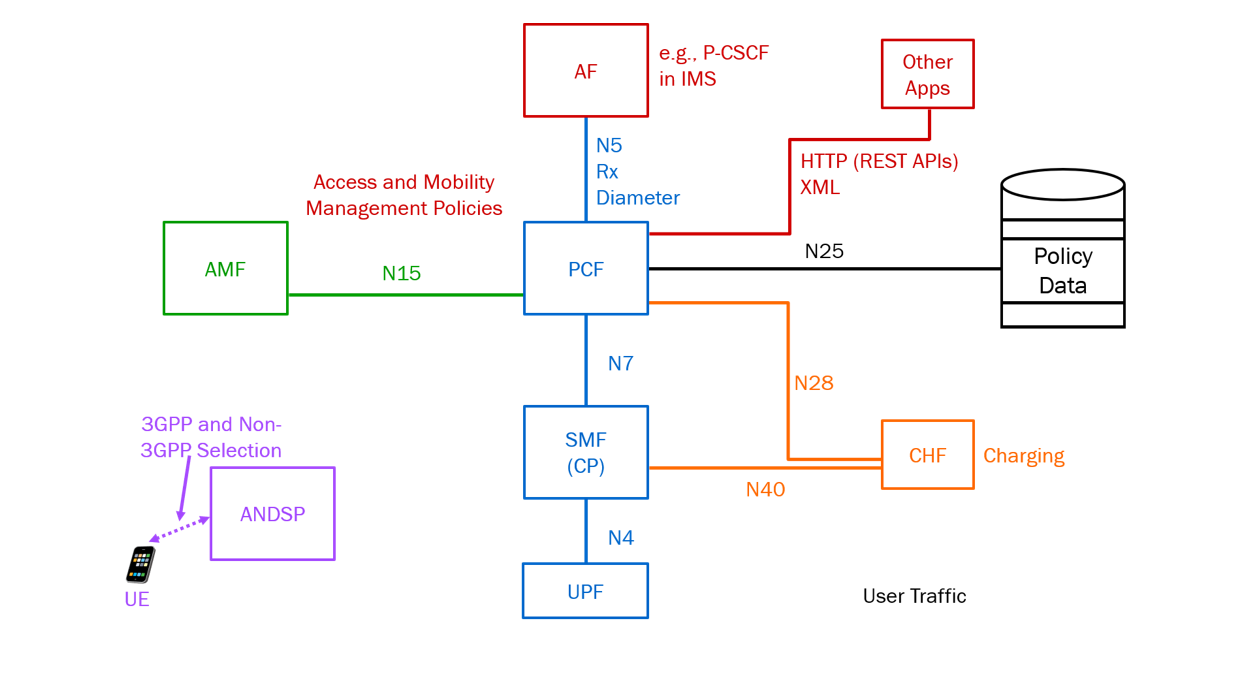
Introduction
This document provides an overview of the architecture for the 5G packet core, including a description of the functions of the network elements. Where appropriate, these new network elements are compared to their equivalents in the 4G Evolved Packet Core (EPC).
4G EPC
The LTE EPC comprises several network elements listed below.
The Mobility management Entity (MME) serves the UE providing mobility and session management.
The S-GW transports user traffic between the 4G RAN and the P-GW.
The P-GW transports user traffic between the S-GW and external data networks, for example the internet or IMS. The P-GW also assigns UE IP addresses and provides QoS enforcement for user traffic.
The HSS stores customer profile data and generates authentication vectors used by the MME for subscriber authentication.
An auxiliary node, the Policy and Charging Rules Function (PCRF), provides quality of service information to the P-GW for specific traffic types, including charging rules, flow control rules and traffic priority.
Transition to the 5G Core
These same functions need to be performed in the 5G core, together with new capabilities, however, the architecture is different. Some functions have been split into multiple sperate components, while some functions have been combined. The 5G network is also designed to provide a clear delineation between control and user plane functions enabling an implementation using Network Functions Virtualization (NFV) and Software-Defined Networking (SDN).
The Access and Mobility Management Function (AMF) serves part of the role of the 4G MME, that of mobility management. The AMF maintains a NAS signaling connection with the UE and manages the UE registration procedure. The AMF is also responsible for paging.
Subscriber authentication, during registration or re-registration with 5G, is managed by the Authentication Server Function (AUSF), which obtains authentication vectors from the UDM.
The 5GC Session Management Function (SMF) provides the session management functionality of the 4G MME and additionally combines some control plane functions of the S-GW and P-GW. The SMF allocates IP addresses to the UE.
The User Plane Function (UPF) combines the user traffic transport functions previously performed by the S-GW and P-GW in the 4G EPC. The UPF anchors the UE IP addresses. The overall uplink traffic flow is from UE to gNB to UPF and the reverse for downlink traffic. The UPF provides the QoS enforcement function.

As shown in the diagram, the MME functions have essentially been distributed among the AMF, the SMF, and the AUSF.
The two gateways in the 4G EPC, S-GW and P-GW, have both been combined and split into control plane and user plane functions, and absorbed into the SMF and the UPF.
When a UE is in idle mode downlink traffic is buffered at the UPF, the UPF signals the SMF which then signals to the AMF to start the paging procedure.
Management of Subscriber, Policy, and Other Data
Information about subscribers, application-specific data, and policy data can be stored in the UDR. The Unified Data Management (UDM) interfaces with NFs such as AMF and SMF so that relevant data becomes available to AMF and SMF. The Unified Data Repository (UDR) can store structured data that can be exposed to an NF. In contrast, the Unstructured Data Storage Function (UDSF) is intended for storage and retrieval of unstructured data by a suitable network function. The UDM generates authentication vectors when requested by the AUSF.

Policy
Policy control in 5G is provided by the Policy Control Function (PCF), essentially the same as the 4G PCRF but with added capabilities. In 5G, the AMF interfaces with the PCF for retrieval of access and mobility policies. The PCF maintains its traditional diameter protocol-based interface to an Application Function (AF) but is also enhanced to allow for resource reservation requests using an HTTP/XML-based interface from other services. This opens the 5G network QoS capabilities to other, non-operator, services, providing subscribers with QoS-controlled services from internet providers, for example a movie subscription service.

NSSF for Network slicing
Network slicing is a new capability of the 5G network. It allows an operator set up multiple virtual slices of the RAN, core and transport networks to meet specific service requirements. The Network Slice Selection Function (NSSF) maintains a list of the network slice instances defined by the operator, including their definitions, such as required resources. A UE may be configured with a list of subscribed network slices and can request these during the registration procedure. The AMF will authorize the use of the network slices using subscription information from the UDM or by a query to the NSSF.
N3IWF
The Non-3GPP access Inter-Working Function (N3IWF) is similar to the ePDG in the 4G EPC, which is a secure gateway for the UE access non-trusted networks, such as Wi-Fi and the public internet. One important enhancement is the transport of NAS messages from the UE over non-trusted networks and AMF selection. A 5G UE can perform a network registration from networks other than the 5G RAN and when connected on, for example, 5G RAN and Wi-Fi will have two, distinct active NAS connections with the AMF.
About the Author
Paul Shepherd is a Senior Consultant for Award Solutions. Paul joined Award Solutions in 2012, and has over 28 years of experience in telecom. He has successfully developed and delivered emerging technology training to leading service providers worldwide. In his free time, Paul is also rumored to enjoy playing guitar, especially his Gibson ES Les Paul.
About Award Solutions, Inc.
Award Solutions is the trusted training partner to the world's best networks. We help companies tackle new technologies by equipping their teams with knowledge and skills. Award Solutions invests heavily in technology, research, engineering, and labs to ensure our customers make the most of their resource and network investments.
Award has expertise across all technologies that touch wireless: 5G, Artificial Intelligence, Machine Learning, Network Virtualization, Data Visualization, Data Manipulation, 4G LTE, and more.
